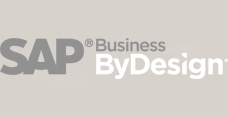The Secrets of Successful ERP Software / Business Accounting Software Selection – Part 1 of 3
19 Aug 2010 | by NatalieHi, this is part 1 of my 3 part blog on the secrets of successful ERP Software selection. Parts two and three will follow over the next few days.
Choosing an ERP / Business Accounting software solution for your business can be time consuming and costly. If you select the correct system and implementation partner the costs will be more than justified and your business will be rewarded with access to information for faster and more effective decision making with many key benefits including increased customer satisfaction, improved cash flow, reduced administration overhead and happier staff.
Make the wrong decision and you can end up spending hundreds of thousands of dollars on a system that gives you less information than you previously had and costs thousands of dollars in monthly upkeep. Once a new system has been implemented changing your mind can be very costly.
So how do we avoid these mistakes?
Most small to medium sized businesses (turnover of $5 million – $50 million) in Australia ask the Finance Manager / Business Owner or IT Manager to source a new solution and business partner / reseller for implementation. The challenge is that most people are only ever involved in one or two software selection processes during their careers and there is not much documentation available to assist in this area.
The team at Leverage Technologies has seen many organisations choose business accounting software /ERP Software solutions. We have taken the best methodologies that we have seen over the years and have come up with the following software selection methodology.
STEP 1 – WHY
Before you even begin searching for a new business management solution ask yourself the question – WHY are we going to market? Generally speaking companies who are going to start searching for a new business management solution do so for one or more of the following reasons:
– Outgrown existing solution
– Using a system which is no longer supported
– Looking to consolidate separate systems or solutions
– Wanting better reporting
– Looking for new technologies – mobile / BI etc.
It is important to know why you are going to market and to esnure that you can articulate these reasons to potential vendors and within the organisation – so that everyone understands the importance of the project.
STEP 2 – PROJECT TEAM, BUDGET AND TIMELINES
Many small or medium sized businesses in Australia don’t bother establishing a project team for software selection and this is potentially a big mistake. My suggestion is that you establish a project team who represent the various business units in your business. Also establish your budget and timelines at this point in time. Budget is very important as there is no point spending hours reviewing great software solutions that cost more than double your budget.
STEP 3 – REQUIREMENTS
Having established your budget and assigned a project team the next step should be to consider your requirements. This is generally done by appointing a “business lead” for each functional part of your business – finance, distribution, warehousing, manufacturing etc. Ask each business lead to put together a requirements list. For larger companies a requirements list might be a large and comprehensive document but for most Australian SME’s a requirements list should be no more than 2 pages per functional area and should focus on the more difficult, critical and unique business requirements. This functional list is not a scope of works – it is purely an initial guideline for potential vendors.
Thanks for reading….part 2 of this blog will be posted later this week.







Leave a comment